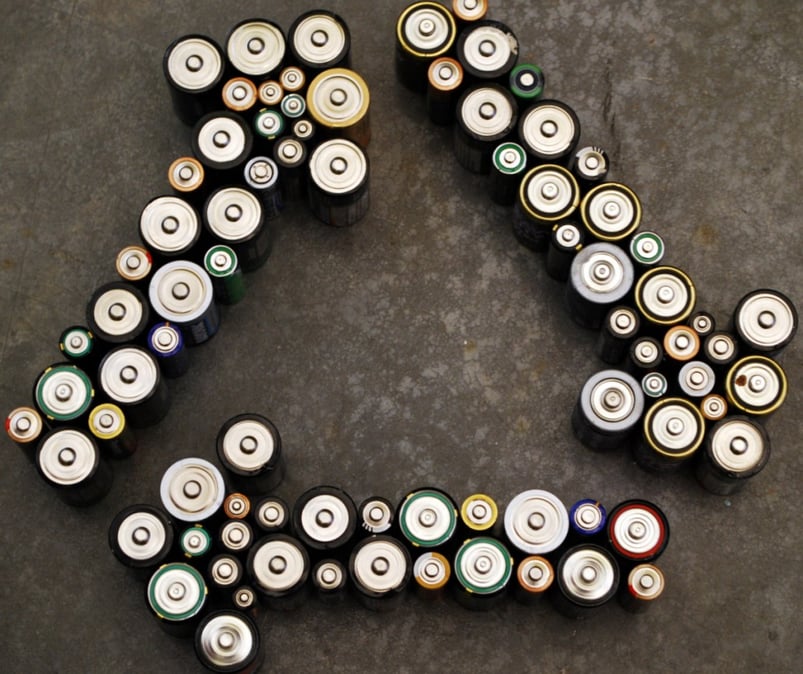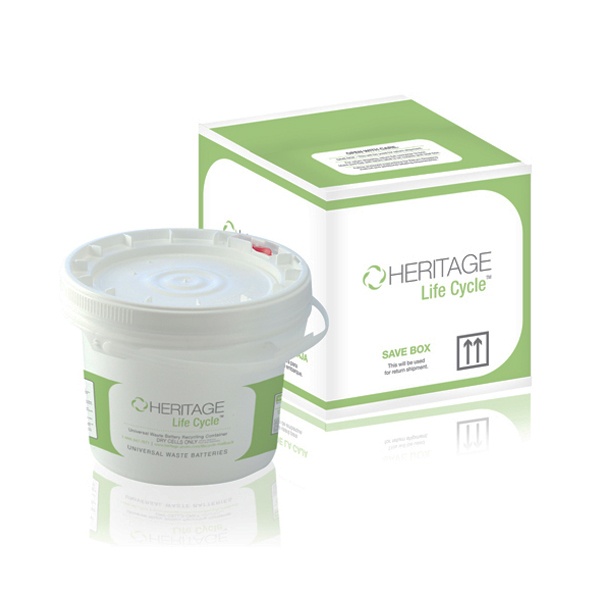
Depending upon your location and battery type, some batteries are now considered hazardous “Universal Waste”, meaning that it is illegal to place batteries in the trash or curbside recycling container. The improper disposal of batteries can cause soil contamination and water pollution; in addition, battery recycling is important because they are a valuable metal source and recycling keeps strong corrosive acids away from the eyes and skin of sanitation workers.
The battery types that cannot be disposed of with your regular trash must be taken to a Household Hazardous Waste disposal facility, a universal waste handler or an authorized recycling facility. To figure out how your most commonly-used batteries should be disposed of, check out our handy table below!
| Battery Type | Description | Disposal Method |
| Alkaline | · Reaction between zinc and manganese dioxide
· Considered dry cell (single-use) · Contains no toxic material · Shorter life than lithium batteries |
Can be disposed in regular trash (although you should avoid disposing of large numbers of alkaline batteries in a group); some states like CA are exceptions |
| Lithium | · Uses lithium metal or lithium compounds
· Lithium-ion batteries are considered rechargeable (secondary) while batteries with lithium metal or lithium compound as anodes are disposable (primary) · Contains toxic materials · Includes coin-shaped cell batteries · Longer life than alkaline batteries |
May have special disposal instructions; likely needs to be recycled at a special facility |
| Wet Cell | · Typically rechargeable (secondary)
· Contains a liquid electrolyte like sulfuric acid, which is a dangerous corrosive liquid that damages what it comes into contact with · Commonly found in energy storage or electric utilities |
Depends on 1) battery specifications and 2) your state’s and county’s regulations (ie. California requires all battery types to be recycled) |
| Dry Cell | · Typically single-use (primary)
· Includes alkaline and carbonic zinc, mercuric-oxide, silver-oxide and zinc-air and some types of lithium batteries · Does not contain liquid · Generates power from a slightly moist paste or powder · Includes alkaline and lithium ion batteries · Often used in portable electronics |
Depends on 1) battery specifications and 2) your state’s and county’s regulations (ie. California requires all battery types to be recycled) |
| Primary | · Single-use; disposable
· Includes alkaline/manganese, carbon-zinc, mercuric-oxide, zinc-air, silver-oxide and other types button batteries · Lower initial cost; higher life-cycle cost |
Likely to be disposable with your regular trash; some states like CA are exceptions |
| Secondary | · Rechargeable
· Includes heavy metals like lead-acid, nickel-cadmium, and potentially nickel-hydrogen · Higher initial cost; lower life-cycle cost · Maintenance required |
May have special disposal instructions; likely needs to be recycled at a special facility |
Some additional ways you can help to reduce waste and protect the earth from the harmful chemicals found in batteries includes:
- Purchasing rechargeable batteries and a battery charger
- Searching for portable electronic devices that do not include batteries and that use a capacitor instead
- Looking for batteries that have less mercury and heavy metals
- Using single-use batteries wisely
PureWay carries solutions for both wet and dry cell batteries in a variety of sizes. We have a 1-Gallon & 3.5-Gallon Dry Cell Battery Recycling Container, a 1-Gallon & 3.5 Gallon Lithium Battery Recycling Container and a 2-Gallon Sealed Lead Acid Battery Recycling Container. If you have any questions regarding the disposal of your office’s batteries, feel free to contact PureWay for help.

Sources:
http://www.ehso.com/ehshome/batteries.php
http://www.epa.gov/wastes/conserve/materials/battery.htm





